Best Practices to Building Sustainability and Impact
By Alex Serna
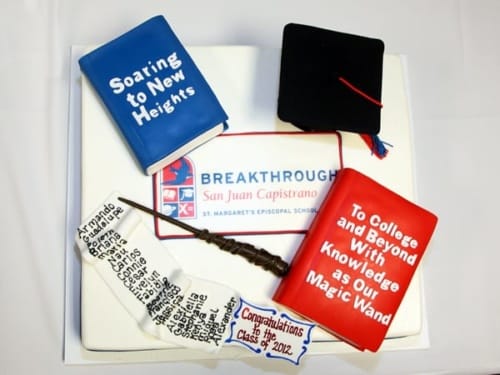 Our goal at Breakthrough San Juan Capistrano is to get low-income first-generation students in and through college, and the same is true for the school district our students attend. Even though we have similar missions, we get there walking different paths. There are considerable structural, bureaucratic, demographic and political differences operating in school districts and not in nonprofits. But as a program director working with a college access nonprofit supporting 160 students (94 percent which will be the first in their families to attend college) some key nonprofit best practices could support school districts in our shared efforts to close the opportunity gap and enable more underserved youth to graduate college. In the last three years 88 percent of our students have applied and been admitted to 4-year universities, so there is something we can offer to support our common purposes.
Our goal at Breakthrough San Juan Capistrano is to get low-income first-generation students in and through college, and the same is true for the school district our students attend. Even though we have similar missions, we get there walking different paths. There are considerable structural, bureaucratic, demographic and political differences operating in school districts and not in nonprofits. But as a program director working with a college access nonprofit supporting 160 students (94 percent which will be the first in their families to attend college) some key nonprofit best practices could support school districts in our shared efforts to close the opportunity gap and enable more underserved youth to graduate college. In the last three years 88 percent of our students have applied and been admitted to 4-year universities, so there is something we can offer to support our common purposes.
Funding can either create program depth and breadth or drastically reduce it. Most non-profits operate modest budgets… lean organizations not by design, but by necessity. Thus requiring creative ways to leverage resources, building sustainability with no capital and focusing on essential high-impact actions. Likewise school districts operate on precarious budgets predicated on a mixture of federal, state and local monies within the context of competing interests for that much-needed funding. In essence, this leaves many school districts operating on a lean budget but wanting to do more with much less. The conflation of the two competing interests leaves many schools and students in underesourced communities struggling to meet outcomes, the most important being preparing youth for college and beyond.
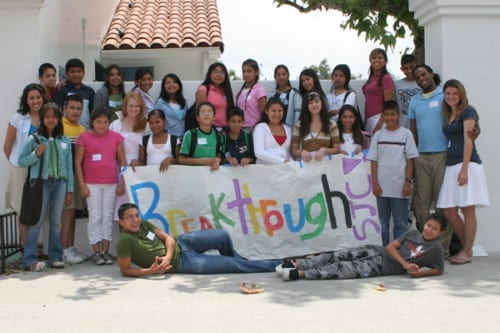 Even though national graduation rates as an aggregate have increased over the last decade, the rate of low-income first-generation students entering and finishing college has remained stagnate. According to Pell Institute report on “6-Year Degree Attainment,” only 10.9 percent of low-income, first-generation students attained a Bachelor’s degree, whereas 54 percent of non-low-income, non-first-generation students obtained their degrees. In the grand scheme a less college-educated nation can atrophy an economy, reduce civic engagement and curtail innovation. And, as reported by the Office of the President in 2014, “Increasing college opportunity is not just an economic imperative, but a reflection of our values. We need to reach, inspire, and empower every student, regardless of background, to make sure that our country is a place where if you work hard, you have a chance to get ahead.” As the rate of low-income, first-generation students starts to grow, an event horizon of demography and college attainment will culminate in a large uneducated workforce in just a few decades. This is not as a result of malintent, but severe structural inequities. As noted in the The State of School Counseling: Revisiting the Path Forward 2017, “High student to counselor ratios tend to be exacerbated in urban settings, with counselors also among the most under-resourced and vulnerable to school budget cuts, compounding the difficulty in providing services in communities with the greatest need.” Something must be done and there are ways that school districts can be creative, audacious and innovative with the resources they do have and ones they just need to uncover. And, nonprofits can serve as a guide to uncover some of those resources.
Even though national graduation rates as an aggregate have increased over the last decade, the rate of low-income first-generation students entering and finishing college has remained stagnate. According to Pell Institute report on “6-Year Degree Attainment,” only 10.9 percent of low-income, first-generation students attained a Bachelor’s degree, whereas 54 percent of non-low-income, non-first-generation students obtained their degrees. In the grand scheme a less college-educated nation can atrophy an economy, reduce civic engagement and curtail innovation. And, as reported by the Office of the President in 2014, “Increasing college opportunity is not just an economic imperative, but a reflection of our values. We need to reach, inspire, and empower every student, regardless of background, to make sure that our country is a place where if you work hard, you have a chance to get ahead.” As the rate of low-income, first-generation students starts to grow, an event horizon of demography and college attainment will culminate in a large uneducated workforce in just a few decades. This is not as a result of malintent, but severe structural inequities. As noted in the The State of School Counseling: Revisiting the Path Forward 2017, “High student to counselor ratios tend to be exacerbated in urban settings, with counselors also among the most under-resourced and vulnerable to school budget cuts, compounding the difficulty in providing services in communities with the greatest need.” Something must be done and there are ways that school districts can be creative, audacious and innovative with the resources they do have and ones they just need to uncover. And, nonprofits can serve as a guide to uncover some of those resources.
Nonprofits and community-based organizations exist to fill a void in access, resources or services to underserved communities. They are a bridge. In most cases, they have a focused mission to address whatever need they are trying to fill, thus directing all their energies on that goal. As a college access non-profit we exist to support low-income, first-generation students to attend college. In my work, there are three key best practices that allow us to build sustainability and have high-impact with less funding. As a strategy, these practices can enable school districts to do more with less.
Proactively seeking partnerships to leverage resources
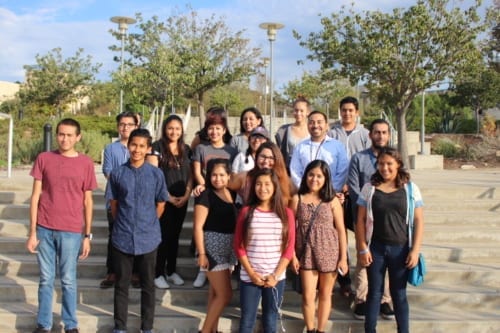 Operating in silos can occlude the combined impact of resources, efforts and services for organizations. As a nonprofit, actively seeking external organizations to either fill, extend or deepen program leverages the best of what we do in the service of our students. Start by mapping out all the community-based organizations in the local community that work towards the same goals of supporting underserved communities in an effort to understand the landscape. Initial contact should be focused on orienting one another to the services offered and ways these services can be aligned. Maintain constant communication to ensure alignment. For example, we partner with the local Boys and Girls Club to host college application workshops for all our students, we’ll host a workshop one month while they host another. In the end all our students have access to workshops and as an organization we are only planning one every two months. School districts can start looking past their walls to seek other organizations’ support.
Operating in silos can occlude the combined impact of resources, efforts and services for organizations. As a nonprofit, actively seeking external organizations to either fill, extend or deepen program leverages the best of what we do in the service of our students. Start by mapping out all the community-based organizations in the local community that work towards the same goals of supporting underserved communities in an effort to understand the landscape. Initial contact should be focused on orienting one another to the services offered and ways these services can be aligned. Maintain constant communication to ensure alignment. For example, we partner with the local Boys and Girls Club to host college application workshops for all our students, we’ll host a workshop one month while they host another. In the end all our students have access to workshops and as an organization we are only planning one every two months. School districts can start looking past their walls to seek other organizations’ support.
Mobilizing, train and utilize a volunteer base to amplify impact
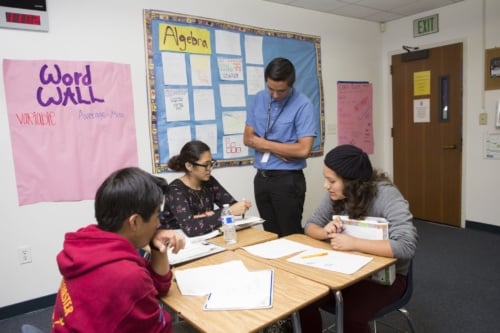 The Parent Teacher Association (PTA) has been an effective way to mobilize parents to support the cultural and social aspects of schools, however, tapping into the community to extend the impact of day-to-day programming on students can be critical to filling the void of scarce resources. Identifying, training and building in volunteers to serve as mentors, a second set of eyes on college essays and more can further enrich the work that counselors do every day. In our organization, we mobilized and train community members to mentor our seniors through the college application process. We serve as the direct trainers, maintain accountability and quality while mentors act as the first line in supporting our students to finish their applications on time. There is more planning, program creation and process development at the front end, but in time it will free up and enable students to have the critical support they need throughout the admissions process.
The Parent Teacher Association (PTA) has been an effective way to mobilize parents to support the cultural and social aspects of schools, however, tapping into the community to extend the impact of day-to-day programming on students can be critical to filling the void of scarce resources. Identifying, training and building in volunteers to serve as mentors, a second set of eyes on college essays and more can further enrich the work that counselors do every day. In our organization, we mobilized and train community members to mentor our seniors through the college application process. We serve as the direct trainers, maintain accountability and quality while mentors act as the first line in supporting our students to finish their applications on time. There is more planning, program creation and process development at the front end, but in time it will free up and enable students to have the critical support they need throughout the admissions process.
Seeking Feedback, Piloting, Evaluating and Repeat
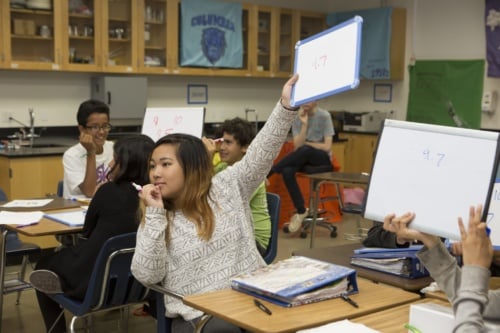 Rapid creative, human-centered innovation is key to improving programs within nonprofits and many startup organizations. By getting feedback from users, i.e. students and families, designing program based on that feedback, implementing and evaluating enables identifying the high-leverage actions or behaviors necessary for successful outcomes. The key is a rapid cycle of feedback and action. Our organization is constantly eliciting feedback and other forms of data (academic) from students and families to understand the effectiveness and impact of our program. If there’s a gap we fill it immediately, gather more data and make adjustments. If school districts only have a finite budget and resources, it’s critical to deeply understand from students and families what works well and continuously improve, innovative and create.
Rapid creative, human-centered innovation is key to improving programs within nonprofits and many startup organizations. By getting feedback from users, i.e. students and families, designing program based on that feedback, implementing and evaluating enables identifying the high-leverage actions or behaviors necessary for successful outcomes. The key is a rapid cycle of feedback and action. Our organization is constantly eliciting feedback and other forms of data (academic) from students and families to understand the effectiveness and impact of our program. If there’s a gap we fill it immediately, gather more data and make adjustments. If school districts only have a finite budget and resources, it’s critical to deeply understand from students and families what works well and continuously improve, innovative and create.
One day, my hope is that my nonprofit organization and others do not exist. Because, it will mean that the opportunity gap has been filled and structural inequities have been absolved. However, until then, nonprofits, school districts and other stakeholders need to listen and learn from one another. There is so much to do, with limited resources, for such a large endeavor.
Author
Further Reading
- The Mercury News – For first gen college students, getting accepted can be the least of their challenges
- The Santa Rosa Press Democrat – New SRJC official aims to make college more accessible
- The Topeka-Capital Journal – Editorial: Tracking first-generation students
